SDM Motor Lens
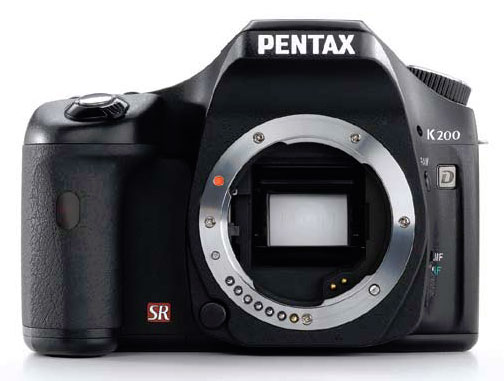
Pentax announced they would introduce new motor lens technology, which they call DA* (pronounced DA star) SDM (Supersonic Drive Motor) when the K10D was launched about a year and a half ago. As you can see in the mount photo, there are two additional gold pins inside the mount that couple with the SDM lens motor. Without these pins the SDM lenses function like standard AF screw-drive lenses.
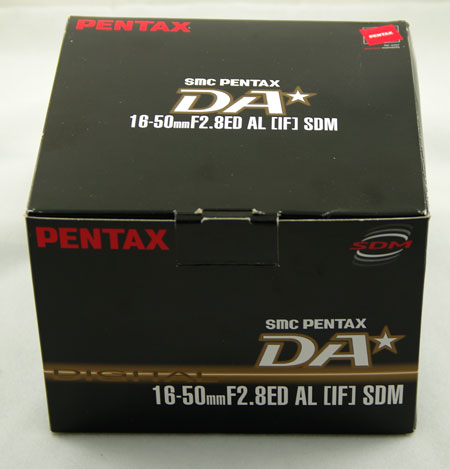
It was not until about five months ago that Pentax finally began shipping the new SDM motor lenses, and they require at least a K10D with an upgrade to firmware 1.30 for the motors to even work. As a result, almost no one took a closer look at the new Pentax motor lenses. Now with the K20D we have the first real opportunity to work with a Pentax motor lens, specifically the 16-50mm f2.8.
On a side note, we really wish the marketing guy who is so hell bent on using * would get over it (first "*ist D" and now "DA*"), because the realities in a computer world were not considered. * usually signifies a wildcard in computer lingo, which means these Pentax products with the clever little * name can't be searched in Google or other search engines. This makes it impossible (or at best very difficult) to find these specific Pentax products with a * in their name in a search engine or at a web retailer site. Clearly that wasn't the intent of Pentax, but someone in the company needs to realize it's a bad idea and not very helpful for their sales.
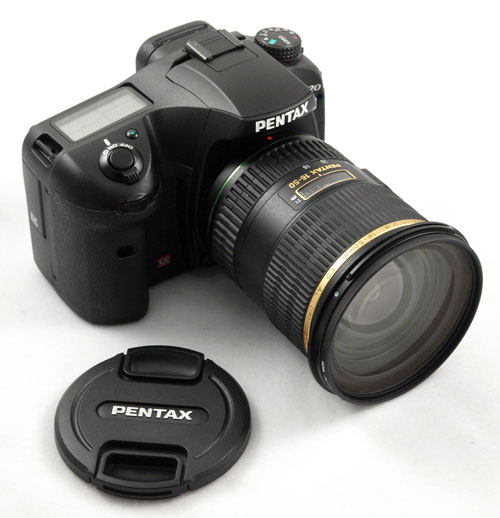
Back to the camera, we mounted the 16-50 DA* SDM and we were frankly blown away. We thought the lens was broken because we couldn't hear the autofocus motor at all during focusing. The focus was so fast we assumed it wasn't focusing but we quickly saw the lens was definitely focusing.
Our everyday cameras right now are a Canon 5D full-frame and 40D with Ultrasonic lenses and a couple of L lenses, and an Olympus E-3 with a Leica 25mm F1.4 and the new 12-60mm SWM lens. The Pentax DA* SDM is quieter than any of these cameras, including the 24-105mm Canon L. It is also subjectively as fast as or faster than any of these cameras with their best motor lenses. We were shooting test shots in my available darkness office and the DA* SDM AF performance was nothing short of remarkable.
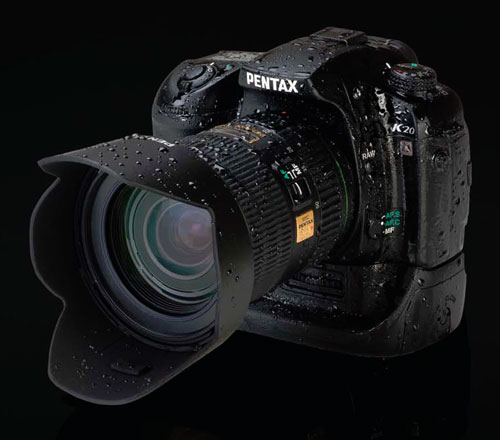
The 16-50 f2.8 fast wide angle to short telephoto (24-75mm equivalent) features a lens motor and sealing against dust and moisture, just like the K10D and K20D camera bodies. At first glance, the street price of around $700 will seem very high until you compare it to similar offerings from Canon and Nikon. The 17-55mm f2.8 IS Canon will set you back $1000 or more and the Nikon 17-55 f2.8 is a healthy $1190. The Canon 16-35 f2.8 L is another comparable lens at $1370. By comparison the Pentax DA* 16-50mm f2.8 SDM, designed and built to similar Pro specs, is an absolute bargain.
This caused us to wonder how others would review the K20D. Most use the standard 50mm f1.4 lens from the manufacturer in testing Autofocus. The Canon 50mm is an Ultrasonic motor lens, while the Pentax 50mm is an old-style AF screw drive. Popular Photography modified their test procedure to accommodate the fast Olympus SWM motor in their E-3 review, but it is clear they didn't even bother to retest for the K20D and used older K10D launch AF numbers when SDM lenses were not even available. Unfortunately, that means their AF tests of the K20D are not comparable to Canon or Olympus or Nikon.
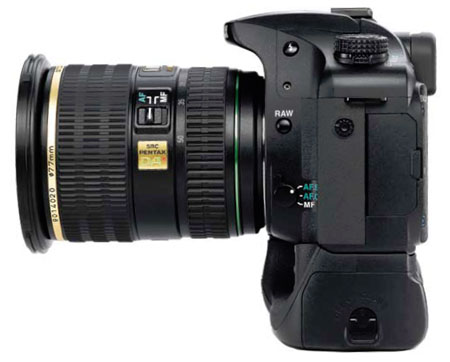
We are trying to determine how best to test AF to account for the improved performance of SDM. The point is that the first question for any review of the AF performance of the K20D should be whether it was tested with an SDM lens. If an SDM lens was not used the review is not measuring the K20D autofocus performance in an apples-to-apples comparison.










50 Comments
View All Comments
lol101 - Tuesday, March 11, 2008 - link
The HypP mode is different from the program shift that you can find on other manufacturer's models.In HypP mode, when you select an aperture, you're effectively going to Av mode, meaning that the camera will keep the selected value for all subsequent shots and adapt the shutter speed.
Same goes for selecting a shutter speed that gets you in Tv mode.
Each time, the selected parameter is underlined in the VF so that you always know which parameter is dominant.
If at some point you decide you want to hand control back to the camera (ie switch back to P mode), you just have to press the green button.
Simple, usefull and very efficient.
dug777 - Tuesday, March 11, 2008 - link
I appreciate that, but what you've both described is what happens in A & S Priority for Nikon (*screams*).In A priority, you select an aperture, and the camera picks the shutter speed. The aperture does not change until you change it (ewven if you turn the camera off. You know Aperture is dominant because you've turned a dial to set 'A' for aperture priority.
Vice versa for shutter priority.
All HyP appears to do is allow you to go directly into A or S (and effectively full manual if you do both), without turning a dial.
You do however need to press a button to go back to full P. So it saves you that initial click. But it does sound pretty handy, and easy to use.
Unless I'm missing something blindingly obvious, in which case I sincerely apologise for wasting your time :o
lol101 - Tuesday, March 11, 2008 - link
Yes, the only thing the HyP mode allows you to do is switch between P, Tv or Av without having to stop shooting to switch some dial.It may look like a small subtlety but I can assure you it just makes the photographer's life easier.
It's instantaneous and the camera just doesn't get in your way when faced with changing conditions and that's what's interesting about it.
I use both Pentax and Canon systems and still cannot understand why Pentax are the only one to implement such things as HyP (or even better: HyM mode) or to allow the user to set the ISO directly with some dial and use one button press to go to auto ISO.... these are just things that make you forget about the camera while shooting and being able to control everything without ever leaving the VF from the eye.
The 'philosophy" is rather simple IMO: give the photographer a way to adjust any shooting parameter (shutter speed, aperture or ISO) when he wants it and without having to bother about pressing a dedicated button or changing a mode dial.
Heidfirst - Wednesday, March 12, 2008 - link
I suspect that Pentax aren't the only ones to give that functionality but probably are the only ones to do so in that exact way.Minolta (now Sony of course) were always thought of as cameras designed by photographers for photographers (Canon are designed by engineers for marketing :P) - I suspect that theirs & Pentax design ethos are very similar.
Heidfirst - Tuesday, March 11, 2008 - link
Pentax & Minolta/Sony (& probably others) have full A & S priority modes as well though.Going by a later, fuller description of HyperProgramme it does seem to have slightly more than Minolta/Sony's implementation although I would argue that at least some of that secondary ability is covered by user ability/knowledge (I assume that most users of that level of camera have some experience & appreciation of the effects of aperture & shutter) as I'm sure that you would with Nikon.
On my A700 I have Auto, Programme (3 versions), assorted scenes modes (which I suspect also largely covers the secondary abilities of Hyperprogramme), aperture priority, shutter priority, 3 memory settings & of course full manual - a bit of overkill imo.
It's not surprising that I see more people eschewing automation & going back to doing more manually.
Wesley Fink - Tuesday, March 11, 2008 - link
The K20D also has Sv (sensitivity), Tv (shutter), and Av (Aperture) Prioriy programs. Theres is also a very interesting and unique Mode called the TAv (time & aperture priority). In TAv mode shutter speed (time) and aperture are fixed and only the ISO is automatically adjusted for the proper exposure. The camera adjusted ISO is displayed in the viewfinder and blinks if the exposure is out of range. Shutter can be adjusted with the front dial and aperture with the rear dial.There are some situations where you might require a certain aperture for depth of field and at least a certain shutter speed to prevent blur and that is where the TAv mode could be very useful. As far as I know the K20D and K10D are the only SLR cameras with anything like the TAv Program.
Heidfirst - Tuesday, March 11, 2008 - link
Minolta/Sony seems very similar - you actually have 3 Programme modes (as well as full Auto) incl. Pa & Ps where the camera will remember the adjusted setting for future shots & vary the other to compensate as the lighting changes.Wesley Fink - Tuesday, March 11, 2008 - link
Most manufacturers do have variants of the hyperprogram feature and I've used almost all of them. However this Pentax feature is still one of the easiest to use and most flexible when you add the unique Sensitivity Priority program.dug777 - Tuesday, March 11, 2008 - link
Regarding my description of the Nikon D80 system, how exactly is it easier?As far as I can see it's effectively identical (and incredibly easy to use).
Wesley Fink - Tuesday, March 11, 2008 - link
See lol101's description of Hyperprogram below or my detailed desription on page 2 for more info on the specifics of how Pentax Hyperprogram works.